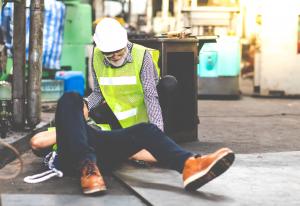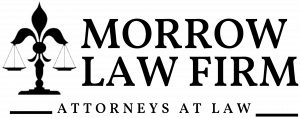
OSHA Violations Often Key Factor in Workplace Injury Litigation, Says Opelousas Attorney
Workplace injury cases in Louisiana, especially those involving construction, industrial labor, or manual trades, frequently include investigations into whether federal safety standards were violated. OSHA regulations serve as a benchmark for acceptable workplace conditions, and a proven violation can influence the outcome of both workers’ compensation claims and third-party liability lawsuits.
“An OSHA violation doesn't automatically create liability, but it can establish a foundation for understanding how an injury occurred and whether it could have been prevented,” said William P. Morrow of Morrow Law Firm, based in Opelousas, Louisiana. “Documentation of noncompliance often becomes central in demonstrating negligence.”
The Morrow Law Firm, led by William P. Morrow, John Michael Morrow, Jr., and Stephen M. Morrow, handles injury litigation with a significant portion involving work-related accidents. In these cases, establishing negligence can hinge on whether an employer or contractor failed to meet mandated safety standards.
OSHA violations may range from inadequate protective equipment and improper scaffolding to insufficient training and failure to mitigate known hazards. While the agency can impose fines and issue citations, these regulatory actions also generate evidence that may be used in civil court proceedings.
Legal strategies often focus on connecting the violation to the injury through causation. For instance, if OSHA cited a company for failure to install proper guardrails and an employee later suffers a fall from height, attorneys can use the citation to illustrate a pattern of neglect.
However, the presence of a violation alone does not guarantee a favorable judgment for the injured party. Courts in Louisiana weigh OSHA findings as one of several factors in establishing liability. Jurors may consider the violation as persuasive but not definitive, and opposing counsel may argue that an OSHA citation was unrelated to the specific incident.
Timeliness also matters. OSHA investigations typically begin after a serious injury or fatality, but not all hazards are formally reported or cited. In many cases, attorneys must conduct independent investigations, including interviews, site visits, and reviews of internal safety records, to uncover the broader context of workplace conditions.
In addition to helping determine fault, OSHA violations can influence the scale of damages awarded. A history of violations, especially those classified as “willful” or “repeat,” may indicate systemic problems and lead to higher settlements or verdicts. Courts may also consider punitive damages in egregious cases where employers knowingly endangered workers.
Despite the importance of OSHA standards in injury litigation, the process is not always straightforward. Some employers challenge citations, delaying final rulings. Others operate under complex subcontracting arrangements, creating legal questions around which entity holds responsibility for safety compliance.
Louisiana law generally prohibits employees from suing direct employers for negligence, reserving such claims for third parties. However, if an OSHA violation implicates a subcontractor, equipment manufacturer, or site owner, those parties may face civil liability outside the scope of workers' compensation.
Attorneys pursuing workplace injury claims must often work alongside OSHA investigators, safety consultants, and medical professionals to build a comprehensive narrative. This collaboration helps establish whether an injury was truly unforeseeable or the result of avoidable noncompliance.
According to Morrow, the presence of an OSHA violation can also influence the settlement posture of a case.
“Litigants tend to approach settlement discussions differently when federal safety violations are part of the record,” said Morrow. “It can shift the conversation from ‘Was there negligence?’ to ‘What were the consequences of ignoring clear standards?’”
OSHA maintains a searchable database of past violations, which is often consulted during litigation preparation. Patterns of past citations—especially involving similar injuries—can reinforce claims that an employer failed to take corrective action.
Injury cases linked to OSHA violations also raise broader questions about workplace culture, accountability, and employee rights. While legal remedies focus on the injured individual, the public record of violations can influence future oversight and lead to operational changes within high-risk industries.
For Louisiana workers injured in environments governed by OSHA standards, a thorough examination of regulatory compliance may prove critical. The presence or absence of a violation can affect case trajectory, legal arguments, and final outcomes.
Legal professionals tracking this issue advise prompt documentation and immediate legal consultation following a serious injury, especially when unsafe conditions are suspected. Early preservation of evidence—such as photos, witness accounts, and incident reports—can make the difference between a clear liability case and an uphill battle.
As federal agencies continue to focus on improving workplace safety, and as legal accountability grows, OSHA violations will remain a central point of contention and clarification in injury litigation.
Morgan Thomas
Rhino Digital, LLC
+1 504-875-5036
email us here
Visit us on social media:
Facebook
Distribution channels: Culture, Society & Lifestyle, Insurance Industry, Law
Legal Disclaimer:
EIN Presswire provides this news content "as is" without warranty of any kind. We do not accept any responsibility or liability for the accuracy, content, images, videos, licenses, completeness, legality, or reliability of the information contained in this article. If you have any complaints or copyright issues related to this article, kindly contact the author above.
Submit your press release

